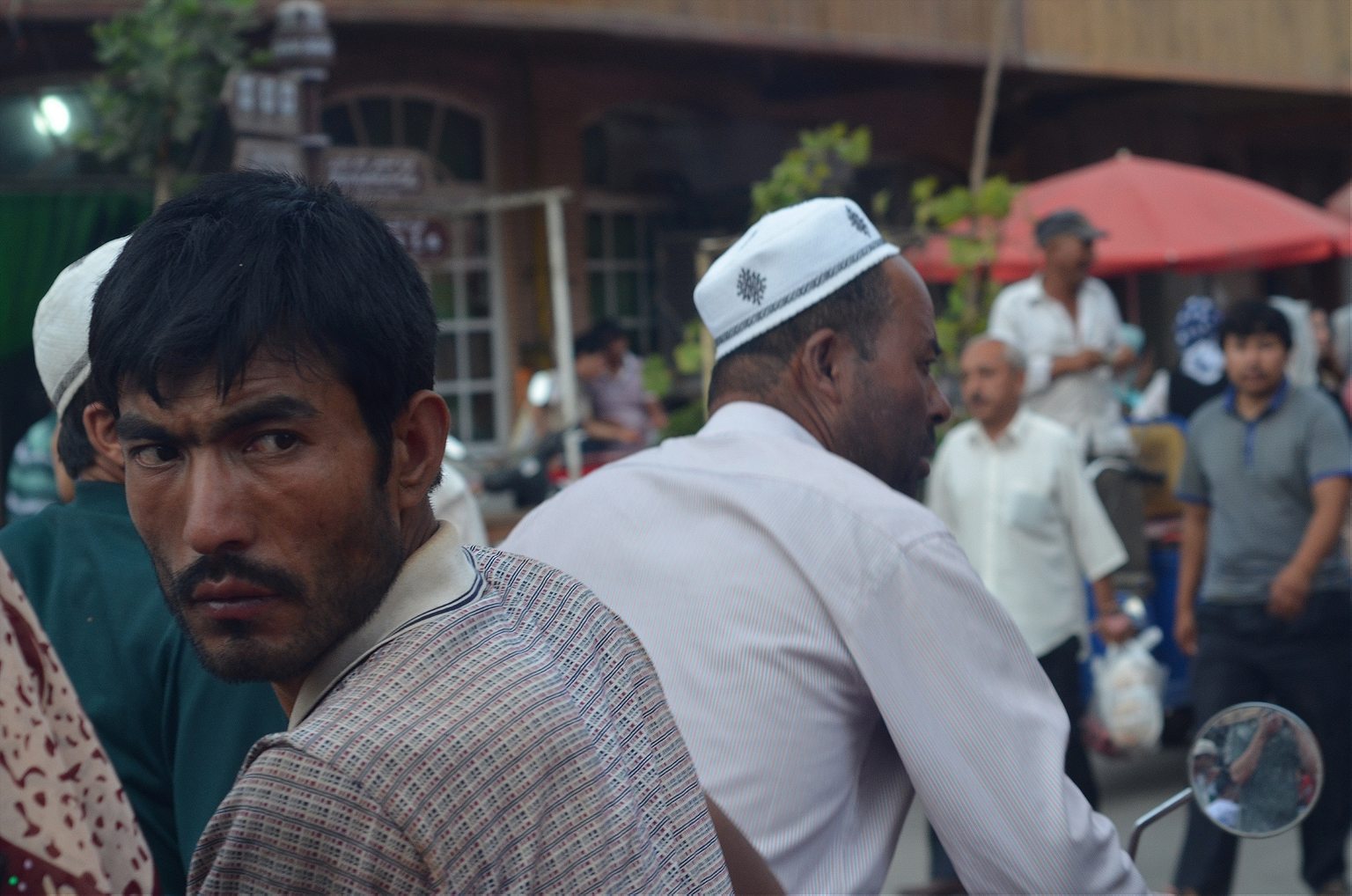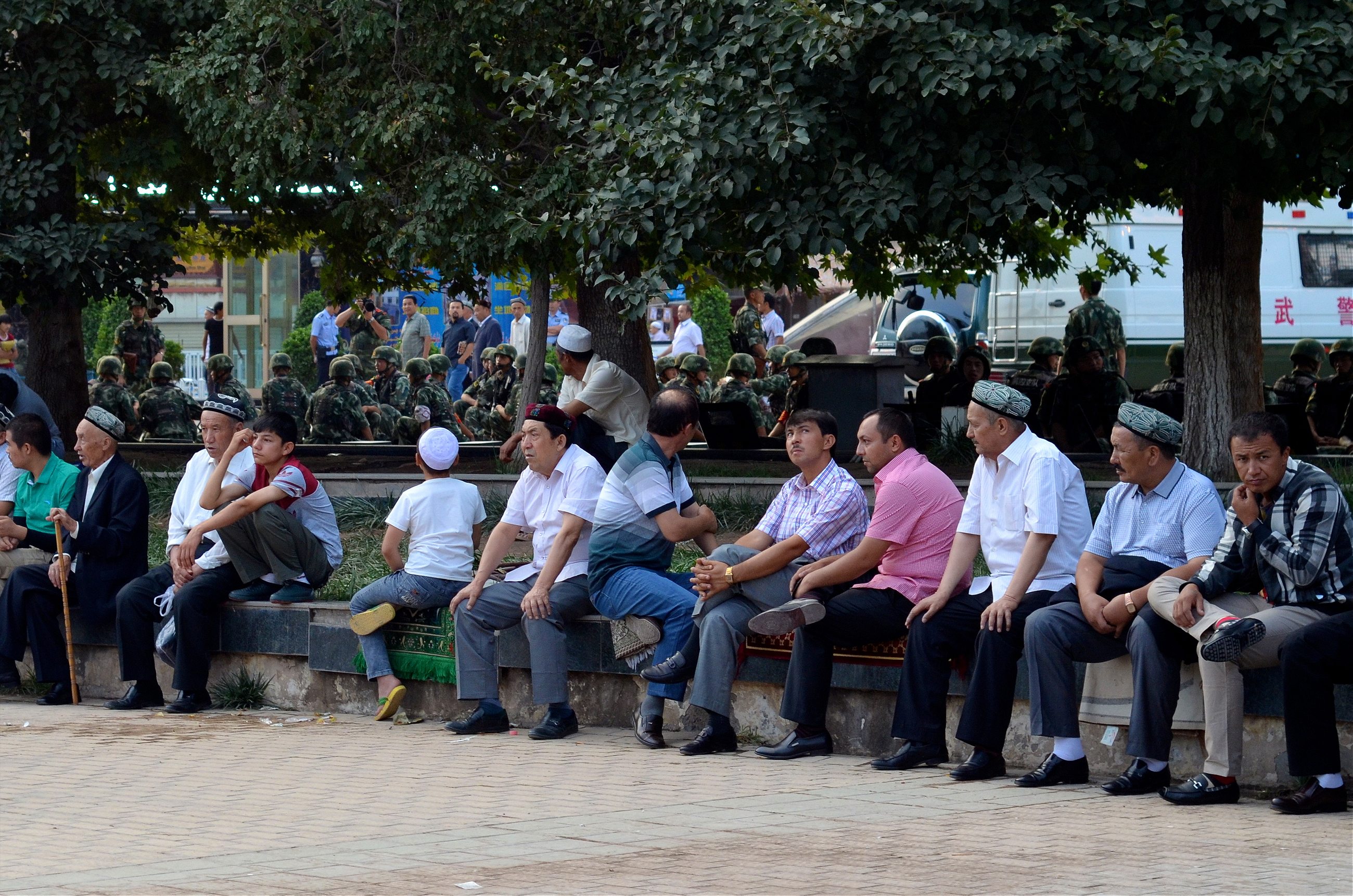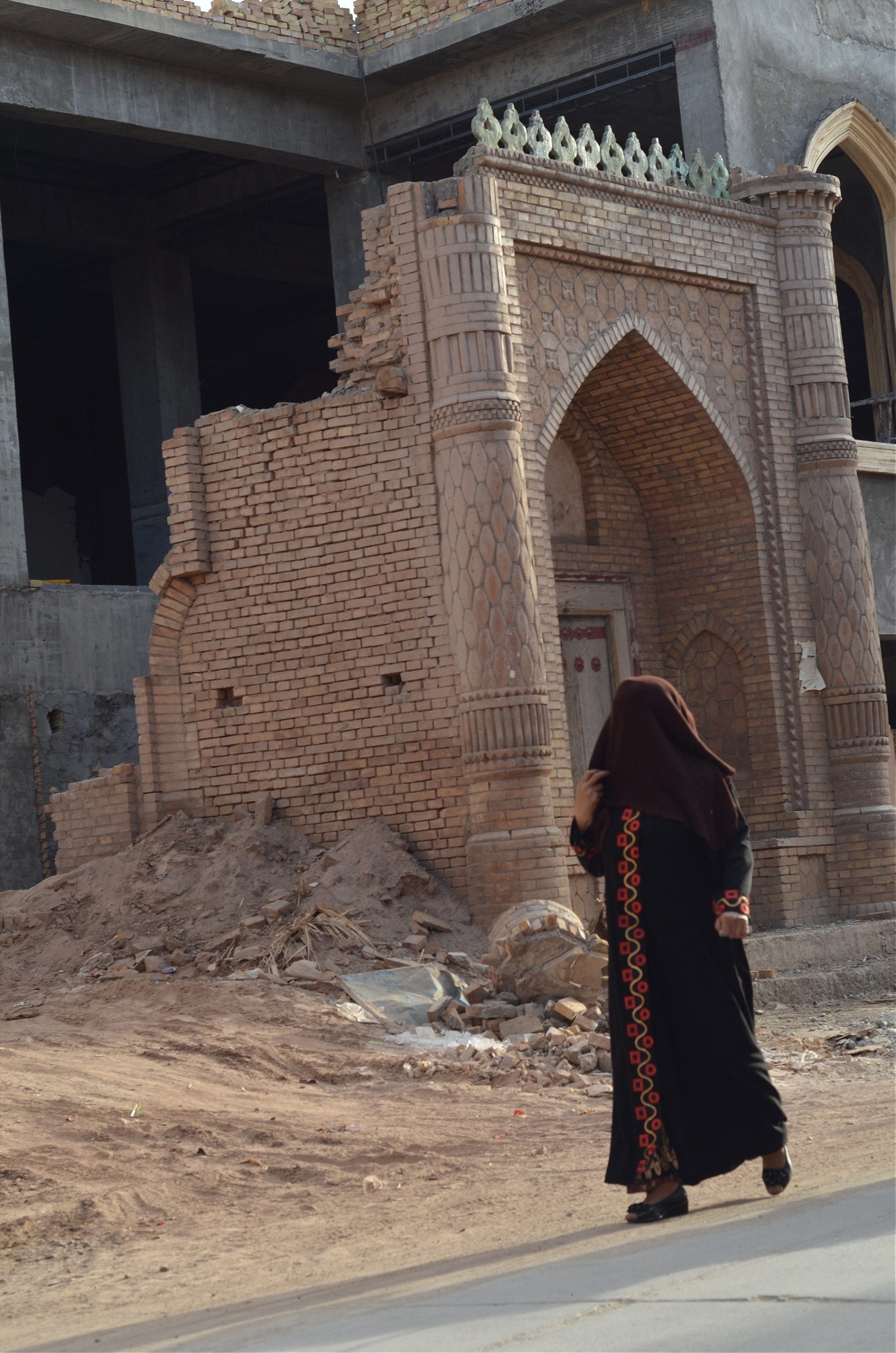A prominent cleric in Western China is stabbed to death after morning prayers, but his city does not mourn him.
There is little reason to wake up early in Kashgar, an ancient Silk Road city of 350,000 in the southwestern corner of China’s vast Xinjiang region. The local Uighur people, a Muslim, Turkic-speaking minority from the northwestern region, adhere to a time zone two hours behind China Standard Time, the officially designated time zone for the People’s Republic. Even if you wake up at ten AM in the mostly Uighur city, hardly any businesses are open. Into the late hours of the morning, the twisting streets of Kashgar’s atmospheric old town remain bastions of solitude; stirring, peaceful places for the introspective traveler. But this was not the case for the unlucky French tourist who, while walking in front of Id Kah mosque in the young morning hours of July 30th, came upon the bloodied body of imam Jume Tahir.
Id Kah is China’s largest and oldest mosque, dating back to the 15th century. Its front, which faces a sprawling public square, is a bright daisy yellow with two towering spires on either side. The mosque dates back to the 15th century and is China’s oldest. It was right outside one of the side entrances to Id Kah where Jume Tahir was attacked by three young men wielding knives and axes. He had just finished morning prayers when 19-year-old Nurmemet Abidili, along with two other young Uighur men, came upon him. They struck quickly and were attempting to flee on foot when police responded with gunfire. By the end of the episode, Abidili had been apprehended and both his co-conspirators shot dead. The 74-year old cleric lay motionless in a pool of blood, dead beside his place of work and worship.
The internet was shut off and text messages wouldn’t send
I was also in Kashgar that day. Soldiers and police flooded into the city on the backs of hulking military trucks. The internet was shut off and text messages wouldn’t send. I was staying at the Old Town Youth Hostel, where dorm beds rent to Western travelers for $6 a night, and the owner there told me he had received a call from the local police ordering him not to allow guests to leave the premises. When I finally managed to sneak out the front door, I expected to emerge onto deserted streets. I was surprised to see everything to be the same as it had been for the last three weeks that I had been there.
Uighurs on motorbikes zipped down the road while young boys shouted “Hello!” at me and shot black pellet guns at one another. Women in bright headscarves walked in groups down the sidewalk past hawkers selling nang, a large thin flatbread, and iced drinks of yogurt and honey. Most businesses were closed, but they had also been the day before, to mark the end of Ramadan and the beginning of Roza Heyt, or the Feast of the Breaking of the Fast, a celebratory period that typically lasts for five or six days after Ramadan. It is a joyous time of family gatherings, festive dress and dancing. Even though imam Jume Tahir had been both the vice president of the China Islamic Association, a state-run body supposed to represent the entire nation’s Muslims, and the leader of Id Kah, no one seemed to be in mourning over the murdered cleric. A 25-year-old Uighur summed up to me what seemed to be the local consensus about the assassination: “They don’t care,” he said. “The guy was a Communist.”
Since the Urumqi riots of 2009, where ethnic rioting between Uighurs and Han resulted in the deaths of nearly 200 people, the distinction between religious and political violence has become increasingly blurred. There have been nearly two dozen major instances of violence in Xinjiang since 2009, including two terrorists attacks this past spring that left 34 people dead and over 170 injured. Though Beijing attributes much of the violence to Al Qaeda-like militancy, only a handful of instances can be said with relative certainty to be terrorist attacks perpetrated by Islamic fundamentalists. It is unclear whether the other attacks were of an Islamist nature or merely the lashing out of an extremely disenfranchised group.

But Uighur attacks against fellow Uighurs remain rare. So why did Tahir die? Nurmemet Abidili, the only surviving attacker in Tahir’s death, announced on a segment recently broadcast by CCTV that “Jume Tahir was the target of our jihad because he distorted the doctrine”. With his hands locked under metal bars, he admitted that he attacked the imam with jihad on his mind and that he “wanted to do something big”. It was, not surprisingly, a somewhat pat confession, nearly impossible to independently verify.
Before the outspoken Uighur economist Ilham Tohti was arrested in January and charged with “separatism”, he released a statement in which he warned supporters that he might be coerced into releasing a “false confession” if detained. Tohti cited the possibility of “drugs or other substances” and “torture” as methods that might be used by his interrogators and urged supporters not to believe a confession from him if one were to come.
While it’s not out of the question that Tahir’s attackers stabbed the imam “because he distorted the doctrine”, it is equally likely that they killed the cleric for his pro-Beijing leanings. That seems to be why most Uighurs in Kashgar disliked the man. One resident told U.S. government broadcaster Radio Free Asia, that Tahir had “turned the mosque into a Communist Party propaganda school.” A friendly Turk I met outside Id Kah, who had recently relocated to Kashgar, relayed to me that, “some of these people,” he gestured towards the mosque goers around us, “don’t like him because he worked with the government”. Dilxat Raxit, spokesman for the exiled political organization World Uyghur Congress, told Reuters that local Uighurs, “suspected that he had a special relationship with China’s Ministry of Public Security” and that he helped the authorities monitor Uighur religious activity. His support for Beijing most likely bred resentment among Kashgar’s Uighurs, many of whom disdain the central government.

In both the English and Chinese press, there is little written about the details of Jume Tahir’s life. We know that from 2008 to 2013, he served as a member of the National People’s Congress and at the time of his death he was the president of the Xinjiang Islamic Association, both of which are government bodies. He was often quoted by Chinese state-run media, commenting on instances of Uighur related violence, such as the 2009 Urumqi riots. While in front of a camera or microphone, he did not downplay his support for the Party’s Islam policy.
At a 2010 gathering of the National People’s Congress, Tahir announced through a translator (he couldn’t speak Chinese) that, “Some hostile forces in and outside China have made use of religion to carry out penetration, sabotage and secessionist activities in Xinjiang, and they also sowed discord between religious people and non-religious people. So we must keep vigilance.” He was often quoted by the press denouncing “separatism” and “unlawful religious activities.”
But these recorded snippets, diplomatic and in concert with the government line, reveal little about the true nature of the man, whose family remember him as “loving and charitable”, according to a report on state-run CCTV. Tahir had also been active in reviving Islam in Xinjiang during the 1970’s, when the government lifted restrictions on religion following a decade of state-mandated atheism during the Cultural Revolution.

In public Tahir wore a white turban or a black dopa hat, with plain brown, white or striped robes. He smiled easily, but squinted his eyes when he spoke as if there was always a bright flashlight held in his face. He had grown a whispery, smokey grey beard that hung motionless above his chest line. In appearance, he was a paragon of Uighur religiosity.
The Uighurs have practiced Islam since the 9th century, when the religion came to Xinjiang through traders along the Silk Road and supplanted Buddhism. The Dharma was replaced with the Koran. Since then Uighurs have practiced a variation of Sunni Islam called Sufism. Though pork or liquor—two mainstays of mainland Chinese life—are rare in Uighur neighborhoods, it is perhaps equally rare to encounter ultra conservative Uighurs in Xinjiang.
But Tahir’s murder does come in a time of growing religiosity in the region. Sitting on the square in front of Id Kah, a Uighur graduate student who attends school in Urumqi tells me that she once heard some of her classmates express the opinion that music and dancing should be banned. “They think it is of the devil,” she says. “I have even heard of people having quiet weddings now”—Uighur weddings are traditionally boisterous affairs of dancing and singing. “The other day I went to a restaurant that had men and women eating in different rooms. They had put up a bed sheet between them. I didn’t eat there.”

Rian Thum, professor at Loyola University New Orleans and researcher of Uighur historiography also noticed a stronger sense of Islam on his last visit to Xinjiang. He tells me over the phone, “There’s a lot more veil wearing than there used to be; a lot more face covering than there used to be; a lot more beards than there used to be”. In my own time there, I found the southern region, where Kashgar is situated, to be more outwardly Islamic than the provincial capital of Urumqi was. In Kashgar nearly every woman wore a veil over her hair, some had burqas, and almost nobody wore shorts. How much this increased religiosity has contributed to (or even been caused by) recent unrest in Xinjiang is unclear. But Beijing is not taking any chances.
According to Gardner Bovingdon, professor of Central Eurasian studies at Indiana University, officials are trying to “dilute the religious consciousness” of the Uighurs. “Over the long term, the party aims at no less than ending the transmission of religiosity from one generation to the next,” wrote Bovingdon in his 20l0 book The Uighurs: Strangers in Their Own Land. These efforts are manifest in a variety of ways.
During Ramadan, a month of fasting universally observed by Muslims, the government forbids party and government officials, teachers and students from taking part. One revealing 1997 white paper issued by the Xinjiang Party Committee Propaganda Bureau, a government information body, declared: “Though party members are also citizens, they are first of all members of the party of the proletariat, and therefore enjoy only one freedom—the freedom not to believe—and absolutely do not enjoy the freedom to believe. They cannot have a foot in two boats”.

As part of an anti-veil campaign called Project Beauty, women sitting at street-side tables set up throughout Kashgar are tasked with flagging down other women who appear overly Islamic—wearing all black or too conspicuous a veil—and jotting down their information. There have even been reports of police vans taking away women on the spot, presumably to receive a lecture on appropriate forms of religious expression. These tables are accompanied with poster boards showing photographs of sinister looking bearded men and burqa-wearing women, a sort of public service announcement indicating both proper and improper Islamic stylings.
A billboard I saw in front of Kashgar’s crowded night market warns readers against downloading Islamic media onto their cell-phones. A young Uighur man told me a friend of his had been thrown in jail in June when a police officer, after randomly stopping him and another friend on the street in Kashgar, discovered a picture of Koranic verses on his smartphone. Nearly everywhere you look in Kashgar, you see signs of either religious expression or repression. Tahir’s killers probably had these government policies in mind when they set out to kill the man. And one wouldn’t have to necessarily be an Islamic fundamentalist to be angered by them. In the same way that the Uighurs often act as the manifestation of the Chinese government’s fear of Islam and the influence it holds in societies that practice it, imam Tahir may have stood in as representative of all that enraged Uighurs about being relegated to the terrorist scapegoat in today’s China. As it is with all conflicts between the sacred and the secular, it’s not the bare truth that matters, but interpretations of it. People kill for self-constructed caricatures of reality, not exact reproductions of it.
Tahir’s funeral service was held at his mosque on the same day he was killed. Throughout the afternoon, many hundreds of Uighur men marched to the yellow-walled mosque to pay their respects. Few appeared outwardly mournful. And in the traditional government way, many hundreds of soldiers poured into the surrounding areas of the mosque to make sure no one caused any trouble. Brigades were stationed near each entrance. Most of the soldiers looked bored and uninterested. They wore helmets and dark green camo uniforms with the sleeves rolled up in the stifling heat. Some had matching body armor. They held riot shields, black truncheons and automatic rifles. Curious photo takers caught in the act were forced to delete their memory cards. All afternoon while the funeral service went underway, lines of them marched unabashedly through the square in front of the sacred building. Inside its walls lay the body of the murdered imam, who had lived his life at the nebulous boundary between God and the Chinese state. Outside the walls of the mosque marched the men in riot gear. There was hardly any sound except the birds circling overhead. It felt like a silent film. Lines of soldiers walked in front of the mosque while lines of Uighur men intersected them on their way into the mosque. I stood at the edge of the square with my hands in my pockets. Neither the soldiers nor the Uighurs seemed to notice me. They were far too concerned with each other.